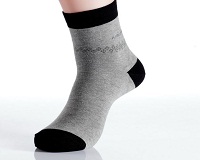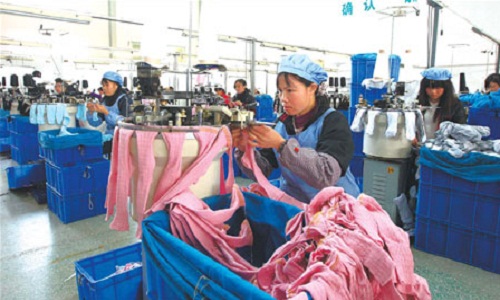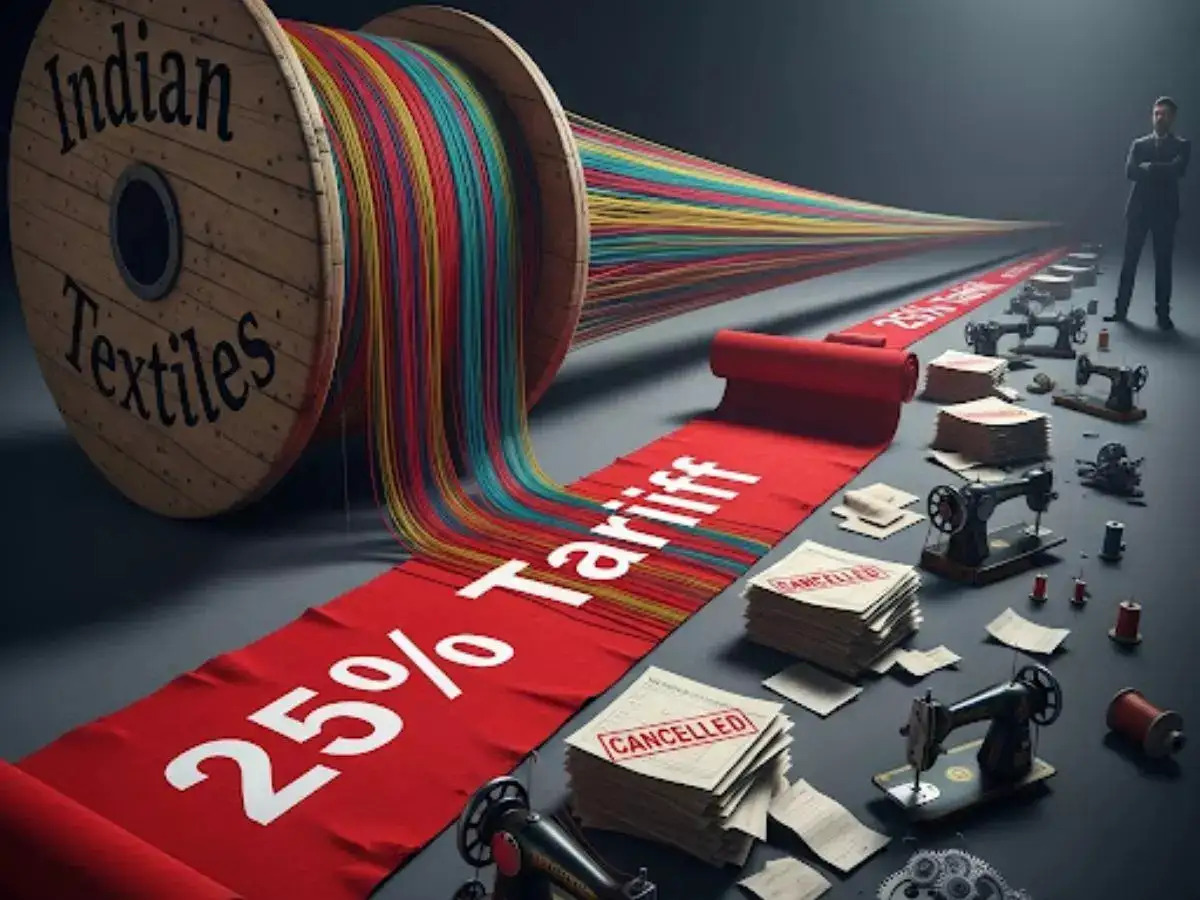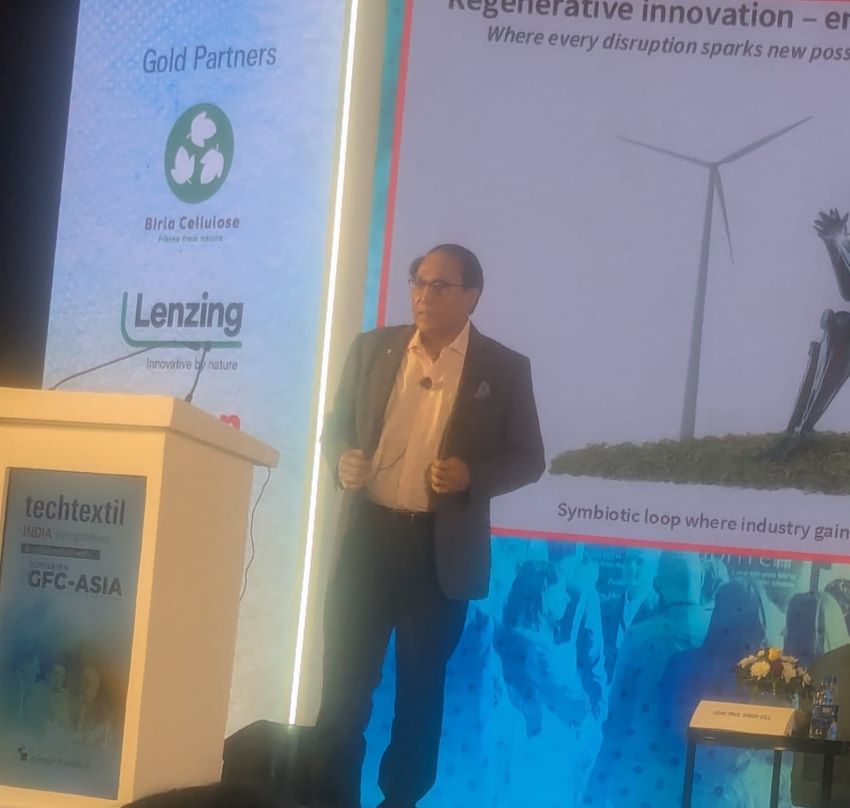FW
The Ethiopian Textile Industry Development Institute has said during the last three months, Ethiopia earned $31.2 million from the export of textiles and garments. The Institute also noted the foreign currency generated from the textile segment has been steadily growing. Institute Communication Directorate Director Bantihun Gessesse has reported textile products have been exported to Germany, Italy, China and United States through AGOA.
The growing might of textile industries is triggering expansion of cotton farming by public, private sector and small scale farmers. Currently, cotton is cultivated in 42,000 hectares. Gessesse informs the Institute is providing training to cotton growers to maintain the quality of cotton.
Prevailing peace and stability, availability of abundant cheap labour, plenty of cheap energy from hydro power and flourishing industrial parks all over the country is attracting foreign investment in the sector. In addition, the government is encouraging foreign investors through the provision of various incentives including tax holidays, tax free capital goods importation, custom services provision on the spot and easily access to financial credit. World’s leading US textile company, HDM located its factory in Hawassa Industrial Park and has so far created 10,000 jobs.
India’s forecast for 2017/18 ending cotton stocks have been lowered substantially in the December WASDE, from 13.2 million bales to 11.7 million. This change partly reflects a 5,00,000-bale cut in production, only partly offset by a 3,00,000-bale cut in exports, but is mainly driven by a revision to 2017/18 beginning stocks and consumption. India’s official estimates of cotton consumption were recently revised back to the 2015/16 marketing year, showing higher use than USDA’s data. These revisions were concentrated on “non-mill use,” indicating consumption outside the usual commercial and industrial channels.
Market analyst note for some time stocks were tighter in India than USDA reports indicated but uncertainty remained about which component of the balance sheet might be incorrect. The revised consumption data from India’s Cotton Advisory Board lowers stocks nearer trade-consensus levels via higher consumption.
From 2015/16 to 2017/18, the most recently revised data suggest an aggregate of about 1.2 million bales more consumption over the 3 years than indicated in the November WASDE. This has a significant impact on India’s stocks-to-use, with 2017/18 stocks-to-use falling from 45 per cent in the November WASDE to about 40 per cent this month. These changes are significantly large to impact international balance sheets, with revisions to India accounting for half of lower 2017/18 ending stocks. Most of the remainder is due to Pakistan, owing to its greatly reduced crop, or higher exports from Australia, Brazil and the US.
"Pitti Immagine Uomo, the premier international event for men’s fashion and lifestyle projects with a global reach, will be held in Florence from January 9 to 12, 2018. The global salon captures the most up-to-date fashion currents and projects with a broad appeal. This edition will have a special focus on athleisure and greater emphasis given to venues dedicated to the most contemporary and experimental menswear styles. It will showcase new generation of artisans from across the globe, cutting-edge designs and luxury underground brands."

Pitti Immagine Uomo, the premier international event for men’s fashion and lifestyle projects with a global reach, will be held in Florence from January 9 to 12, 2018. The global salon captures the most up-to-date fashion currents and projects with a broad appeal. This edition will have a special focus on athleisure and greater emphasis given to venues dedicated to the most contemporary and experimental menswear styles. It will showcase new generation of artisans from across the globe, cutting-edge designs and luxury underground brands. It will feature gender-neutral collections, a selection of the most forward-looking proposals and international talent who are hoping to be discovered. As always, at its core the fair offers quality fashion labels representing the new classic style and brands that promote modern sportswear. All of this together with the unique welcome provided by the Pitti Immagine fairs.

Pitti Immagine Uomo benefits from the extraordinary contribution of the Ministry for Economic Development and the Italian Trade Agency as part of an initiative organised to support Italian trade fairs and Made in Italy. This grant is dedicated to assist with hospitality, media relations and advertising activities.
Pitti Live Movie
Cinema is coming to Pitti Uomo this January. The fair will be transformed into a Film Festival where the styles of various venues will be interpreted as different genres: thrillers, adventure, action and sport movies, spy stories. Pavilions will become movie theaters where one can enjoy the entertainment. The main forecourt of the Fortezza da Basso will evoke a movie theatres district with billboards announcing the scheduled blockbusters, cult and indie movies.
The guest designers presenting their menswear collections at Pitti Uomo include Undercover by Jun Takahashi and TakahiromiyashitaTheSoloist. In a forward-thinking move for Pitti Uomo, Takahashi and Miyashita will present back-to-back menswear shows at the Stazione Leopolda on January 11, 2018 to symbolise and celebrate their personal friendship and deep mutual respect for each other’s work. Brooks Brothers has selected Pitti Uomo and Florence as the stage to kick-start their 200th anniversary -- a celebration of two centuries of style and innovation for this iconic American brand -- featuring a fashion show and a special exhibition in one of the city’s most fascinating locations, Palazzo Vecchio.
The International Woolmark Prize, one of the world’s most prestigious awards aimed at supporting upcoming talent, will be back in Florence where the winners in menswear and womenswear categories will be announced, a first for Pitti. Twelve finalists from around the world will present innovative collections to show the potential of Australian merino wool. The event at the Stazione Leopolda is a joint production in cooperation with Fondazione Pitti Immagine Discovery.
Guest Nation Finland
The most promising names on the Finnish fashion scene will be the stars of the special guest nation project sponsored by the Fondazione Pitti Immagine Discovery. Eight Finnish brand and designers have been selected to show their collections in a special area of the Spazio Carra (Padiglione Centrale – Lower Level). The participants are: Formal Friday, Ikla Wright x Turo, Mannisto, Maria Korkeila x R-Collection, Nomen Nescio, Rolf Ekroth, Saint Vacant, Vyner Articles. Thanks to a new collaboration with Korea Creative Content Agency (KOCCA), Fondazione Pitti Immagine Discovery will once again be turning the spotlights on the most exciting brands from South Korea with two catwalk shows dedicated to promoting the country’s talented young designers.
e-pitti.com
The digital version of Pitti Uomo 93 will be online at e-pitti.com for 9 weeks from January 22, exhibiting over 6,000 products and 920 brands. The platform will also offer an extensive fashion directory of seasonal trends and collection details. This constantly updated section will also hold a selection of street style photos captured by the sharp lenses of young photographers from Polimoda. e-pitti.com and innovation continue to walk hand in hand through ready-to-order, the B2B app to collect orders via iPad, offering both standardised and tailor-made solutions to facilitate sales activities.
The textile enzymes market is largely driven by speedy growth in the textile industry which in turn increases environmental issues mainly to large quantities of waste post desizing of fabrics, bleaching chemicals and dyes and a corresponding focus on cost reduction and resource optimisation. This has also led to significant adoption of textile enzymes in several applications. Given this backdrop, enzymes are used to enhance the development of environmentally-friendly technologies in fibre processing and methods to improve product quality.
Today, enzymes are increasingly being used in textile processing — mainly in the finishing of fabrics and garments — including desizing and finishing of jeans. The majority of enzymes used for cotton pre-treatment and finishing processes include hydrolase and oxidoreductase. The recently introduced technique of stonewashing jeans with enzymes, also called bio-stoning, is expected to drive the demand for industrial enzymes in the near future. For stonewashing jeans, enzymes usually used are acid cellulases and neutral cellulases.
Based on application, the textile enzymes market can be segmented into desizing, scouring, bleaching, bio-stoning, and bio-polishing. The advantages of using enzymes in the textile industry include lower discharge of chemicals and wastewater, improved fabric quality, longer garment life and eco-friendliness.
In terms of geography, the textile enzymes market can be divided into North America, Europe, Asia Pacific, Middle East and Africa and Latin America. The textile enzymes market in Asia Pacific is projected to grow at a rapid pace due to the increased demand for these enzymes in the textile industry. Economic and operational benefits of using enzymes in garment and fabric bleaching and desizing are also estimated to be key factors driving the textile enzymes market.
The use of textile enzymes is estimated to increase due to the technological developments in the fields of thermostable enzyme, protein engineering and enzymes obtained from genetically modified organisms. Prominent players operating in the textile enzymes market include Novozymes, Sigma Chemical Industries, Lumis Enzymes, AB Enzymes, and Refnol.
Japanese fast-fashion brand Uniqlo is considering enhancing sales of semi-made-to-order clothing globally to speed up growth in this segment. This brand currently offers made-to-measure clothing in Japan. The customer supplies measurements or has them taken in-store, places an order and receives delivery at home in a few days. A similar service was recently launched in the US, starting with men's shirts. Over 800 colour and various style combinations are offered online and delivered in three to seven working days. Selling at around $30, the clothing is as cheap as regular shirt selections. The brand is considering offering the service including in Southeast Asia and Europe.
Uniqlo has kept prices low through economies of scale by mass-producing clothing at Chinese facilities which will be manufacturing quality clothing of semi-custom apparel for Uniqlo. Fast Retailing Chairman and CEO Tadashi Yanai is pushing data-driven production and retailing them as a new business model. The company is starting out with semi-custom clothing to establish the production and sales infrastructure for tailor-made products later as business grows.
Uniqlo's online sales is valued at 100 billion yen ($881 million) globally. Fast Retailing targets worldwide sales of 3 trillion yen, including from other brands. Global online sales driven by semi-custom clothing, is expected to account for about 30 per cent, or 1 trillion yen, of overall sales. Such e-commerce giants such as Amazon.com are pushing up apparel sales and so too others are ready to jump the bespoke bandwagon.
Shopholix, India's first fashion and lifestyle couponing platform for brick and mortar stores has raised an impressive sum of Rs 1.5 crore in Pre-Series A round of funding led by veteran investor Munesh Khanna. Shopholix will utilise the funds to enhance the product, strengthen its partner network, and organise overall operations by March 2018.
Founded by Hemant Upadhyay, Abhinav Midha, and Chinmay Bhatt, Shopholix is a location based mobile app and web interface that enables shoppers to locate, explore and plan their shopping trips. The company offers offline retailers a unique opportunity to interact with digital shoppers, and leverage the incoming traffic of users on the platform through coupon redemptions, digital payments, and point of sale systems.
Moreover, the platform seamlessly integrates with any brand's retail CRM to help bring existing customers on board to the Shopholix platform, thus enabling them to experience the next level of retail shopping. Shopholix lets shoppers to discover deals and discounts from around 2,000 local stores, and redeem mCoupons at the retail outlets of popular fashion and lifestyle brands, all on the platform. It has also operations live in Mumbai. The company plans to bring on board 10 lakh total users, and achieve profitability with a valuation of Rs. 100 crores by 2022.
However, it plans to expand its presence across Indian metros and Tier-1 cities, along with major global shopping destinations such as Dubai, Bangkok, Abu Dhabi, Singapore, and Hong Kong.
According to a Singaporean research firm the Cambodian garment and footwear industries need to boost productivity and cut down costs if they are to remain competitive in international markets. Cambodian factory owners should now endeavor to ramp up efficiency at their facilities, with the public sector doing its part in improving logistics infrastructure and reducing the cost of electricity, before the latest wage increase comes into effect according to a report from ASEAN+3 Macroeconomic Research Office (AMRO).
The report further says a new minimum wage for the garment sector will kick in January next year, increasing the minimum salary for workers in the industry from $153 to $170. The new directive makes the minimum wage in the kingdom higher than those of other countries with large garment industries, such as Bangladesh and Myanmar. Kaing Monika, Deputy Secretary-General, Garment Manufacturers Association in Cambodia (GMAC), applauded the report for its accuracy and said they’ve been working for a long time to bolster productivity in the sector.
At present, Cambodia has 520 garment factories and 52 footwear factories which are members of GMAC. According to official data from the General Department of Customs and Excise (GDCE), garment and footwear exports which account for 78 per cent of total exports that increased by 7.2 per cent 2016, reaching $7.3 billion. AMRO forecasts economic growth will remain robust throughout 2017 and 2018, with inflation reaching 3.3 per cent in 2017, up from 3 per cent in 2016, driven by the surging price of crude oil.
The emergence of online fashion retailers have put pressure on traditional, store-based rivals around the world. Asos Plc’s market value surpassed British bellwether Marks & Spencer Group for the first time last month, symbolic of a structural change that has been sweeping through the retail industry for two decades. The growth of discount rivals such as Associated British Foods Primark has only added to the competitive landscape.
Zara owner have fallen 4.5 per cent in 2017, putting them on course for their worst year since 2008. While drop is far less than peers, including H&M AB (down 22 per cent) and Esprit Holdings. (down 35 per cent), it illustrates that even the best in the business are not immune to the challenges of ever-increasing online and discount competition. Renowned for revolutionising the supply chain model for fashion retail, the company has gained a devoted following in the investment community. Raymond James is among 22 brokerages with a buy, outperform or equivalent recommendation on the stock.
According to analysts, as mild European weather delayed purchases of fall/winter garments. Yet they maintain that Inditex has a business model that’s unmatched in the industry. According to Macquarie capital, Inditex’s ability to get products quickly from the catwalk into stores, along with its smaller batch sizes, appeals to a modern consumer who thrives on instant gratification.
According to Inderst, the stock has been hurt by what he calls “short-term concerns” over the impact on profitability of a strong euro and a slowdown in like-for-like performance. Same-store sales growth decelerated to 6 per cent in the six months to July 31, from its strongest in at least 14 years in fiscal 2017. Berenberg’s Michelle Wilson downgraded Inditex to sell last month due to declining confidence in the sustainability of the company’s “exceptional” revenue growth as competition increases.
Such concerns prompted AllianceBernstein’s Phelps to exit his position in Inditex a couple of years ago, having closed his positions in H&M not long before that. He had owned shares in both companies since the mid-1990s, leapfrogging between the two.
"Overriding Italy, Turkey has jumped to second place after China in socks exports globally, accounting for 10 per cent of world exports in 2016. China, the world’s largest socks maker, makes up 40 per cent of the world socks exports, reveals Ozkan Karaca. Though the gap is huge, yet it’s substantial win for Turkish textile industry. With its modern machinery park, and high production and export capacity, Turkey has been inking its name in the global textile market. Istanbul houses around 85 per cent of the factories, it has become an investor’s preferred paradise. "

Overriding Italy, Turkey has jumped to second place after China in socks exports globally, accounting for 10 per cent of world exports in 2016. China, the world’s largest socks maker, makes up 40 per cent of the world socks exports, reveals Ozkan Karaca. Though the gap is huge, yet it’s substantial win for Turkish textile industry. With its modern machinery park, and high production and export capacity, Turkey has been inking its name in the global textile market. Istanbul houses around 85 per cent of the factories, it has become an investor’s preferred paradise. There are more than 300 socks factories in Turkey with medium and large-scale production capabilities. In addition, there are many small-scale workshops that manufacture for the internal market.

It is estimated that 2.2 billion pairs of socks and 300 million pieces of pantyhose are produced annually in Turkey. Turkey’s largest socks manufacturers in 2016, according to the Industrial Chamber for Istanbul (ISO), included Penti Corap, with net sales of $55 million, Beks Corap, with net sales of $51 million, Altin Iplik Corap, with net sales of $41 million, and Bony Corap, with net sales of $40 million.
Exports on fast forward growth track
Being an export-oriented sector, around 75 per cent of socks produced in the country are being exported. The industry is exporting an average of $86 million worth of socks every month. The EU ranks first in exports, with 85 per cent of socks going to EU countries in 2016. The three largest buyers are UK, Germany and France. According Turkish Statistical Institute, in 2016, Turkey exported 1.5 billion pairs of socks and 146.5 million pieces of pantyhose, worth $1 billion 36 million. Of these socks, 1.2 billion pairs are made of cotton. Between January-October 2017, total socks exports amounted to $862.5 million.
The total socks exports was, $1 billion 36 million in 2016 amounting to $251.6 million. With these exports in 2016, UK is the first with a share of 24.3 per cent in Turkey’s total sock exports. United Kingdom was followed by Germany (21.6 per cent) with exports of $224 million. France (10.7 per cent) was in third place with $110.8 million. The share of these three countries in total sock exports was 56.6 per cent.
Target markets: US and Japan
Turkey is eyeing expansion with the The Socks Committee taking umpteen initiatives. The Committee is preparing projects to increase socks exports within the Istanbul Apparel Exporters Union. Ozkan Karaca, chairperson of this committee says two countries were identified as the target market. The US is the world’s largest importer of socks by importing socks of $2.2 billion annually. Germany is second with $1 billion 20 million imports, and Japan comes third with about $1 billion socks imports. In order to enhance its reach, Turkey has started joining the Las Vegas Magic Show in the US as exporters of socks. It is also attending the Shanghai International Hosiery Purchasing Expo in China, the largest sock supplier in the US. This fair is a good platform where both US buyers, as well as buyers from Japan and Australia attend. Özkan Karaca forecasts by 2020, they aim to export $100 million worth of products to the US market and would like to make Turkey one of the five biggest export destinations.
Competing with China
Turkey and China, which export 85 per cent of their exports to EU countries, are experiencing intense competition in this market. According to Eurostat, the difference between the two countries is $43 million. Özkan Karaca states he was the first in the EU market offering price advantage over Chinese produce And the most important advantage of socks made in Turkey is they are three hours away from the EU and can be delivered in a short time of around three days. The disadvantage is that most of the socks factories operate in Istanbul, where the labour, input and production costs are high. Turkish socks workers should establish factories in Anatolia where government support is at hand and labour and input costs are low.
The textile ministry, in an effort to enhance exports from the country, has designed a new marketing plan that will help various segments in the industry to increase exports. The Ministry will follow a segment wise methodology to cater to the specific needs of countries and has to this effect identified 13 potential markets where it will begin marketing activities to promote Indian products such as handicrafts, jute, cotton, textiles and apparel. Textile exports have been on the downslide post GST, which had significantly reduced import duties which is a bone of contention in the industry. Textile and apparel exports from the country have dipped in recent years due to subdued demand in key importing countries including the US and the EU.
Following this debacle, an Integrated Marketing Plan 2017-18 has been created by the Ministry of Textiles to enhance exports. The country’s total textile and apparel exports for the last fiscal was $ 39.7 billion. The textile ministry has set a target of $45 billion exports for the 2017-18 fiscal. The Integrated Marketing Plan 2017-18 will be launched through promotional activities such as B2B meetings, exhibitions and road shows in countries like Germany, France, Italy, the US, China, Hong Kong, Turkey, Australia, Russia, the UAE, Brazil, Egypt and Chile, as per the requirements of Indian products in these markets.
The Ministry said in a statement, “There exists a huge potential for India to increase its market share in various markets by aligning the product with specific market. In line with this, the Marketing Plan has been prepared to synergise various on-going marketing initiatives while adopting specific approaches for traditional, emerging and other important markets.”
The government is also working towards expediting the delayed India-EU FTA. The textile industry has long since been asking for duty-free access for Indian textile and garment items to the EU following competitive pressures from countries such as Bangladesh, Vietnam and Pakistan.












